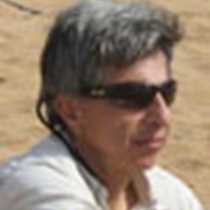On our last full day in the Galápagos our guests enjoyed Genovesa Island. The entire island is a seabird colony where we observed frigate birds, Nazca boobies, red-footed boobies, swallow tailed gulls, red-billed tropicbird and storm petrels.
While we visited this island, we explored two different sites: Darwin Bay and Price Philip´s Steps. Both of these areas offer an impressive biodiversity.
Once at Darwin Bay, besides observing and learning about the seabirds, our guests learned about the different adaptation that the prickly-pear cacti of this island have developed. Because these cacti thrive in an environment without land iguanas and giant tortoises that in other Galapagos Islands prey on cacti, they grow next to the ground and have soft needles.
In the afternoon on the way to Price Philip´s Steps our guests observed Galapagos fur seals shading from the sunlight in between the rocks. Once at the site everybody did a dry landing and immediately after climbed a 90-foot or 30-meter cliff where the Galapagos National Park Services has cemented some rock together and constructed a handrail. Once at the top of the precipice the terrain levelled up and our guest together with our expedition team initiated hiking on the trail. Next to the path we found a good number of Nazca boobies raising their young. Also, we found a great number of red-footed boobies perched on Palo Santo trees. At the end of the trail we found short-eared owls that were trying to capture storm petrels that were going in and out of their nests.
In between the hikes, our guests went on a snorkelling outing where they encountered new species of fish like the Moorish idol and sunset wrasses. Some other guest decided to enjoy a kayaking expedition alone the cliff of Genovesa Island. On the way back to the National Geographic Islander everybody enjoyed watching a beautiful sunset over the horizon.







